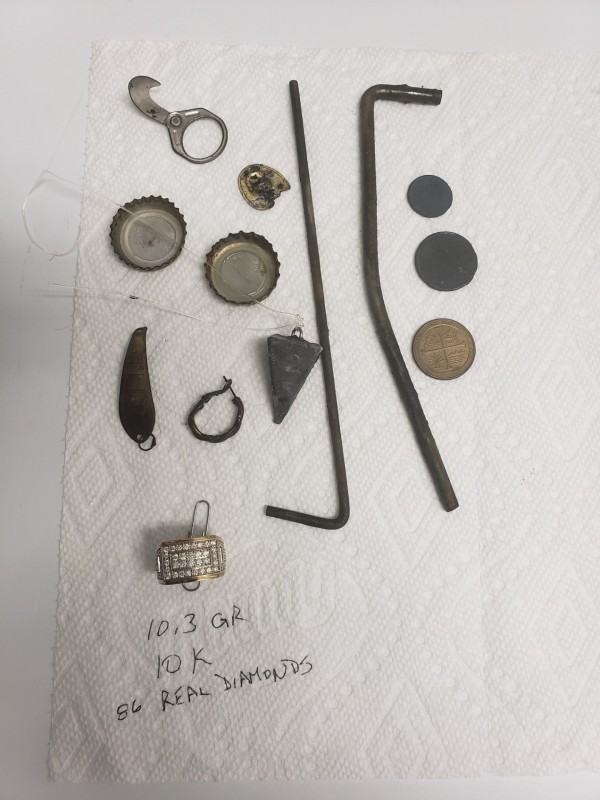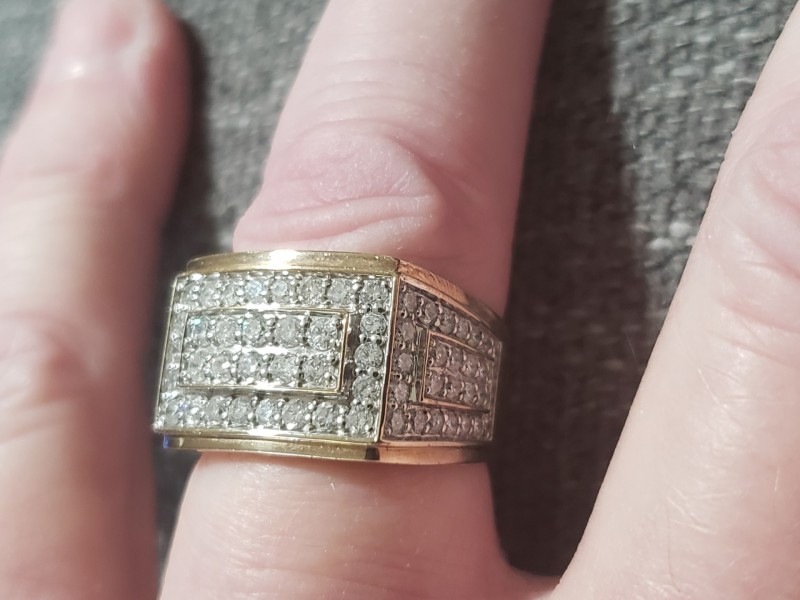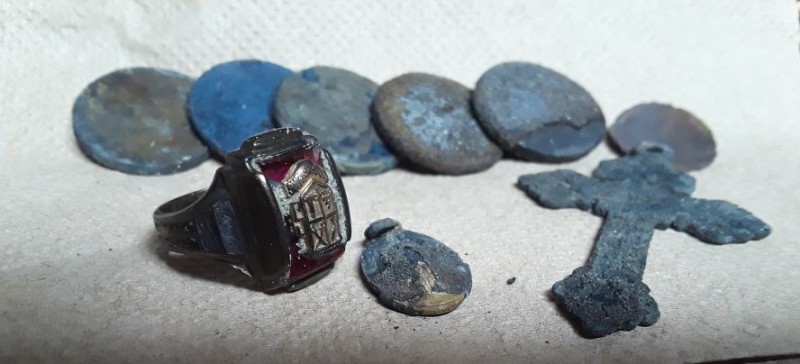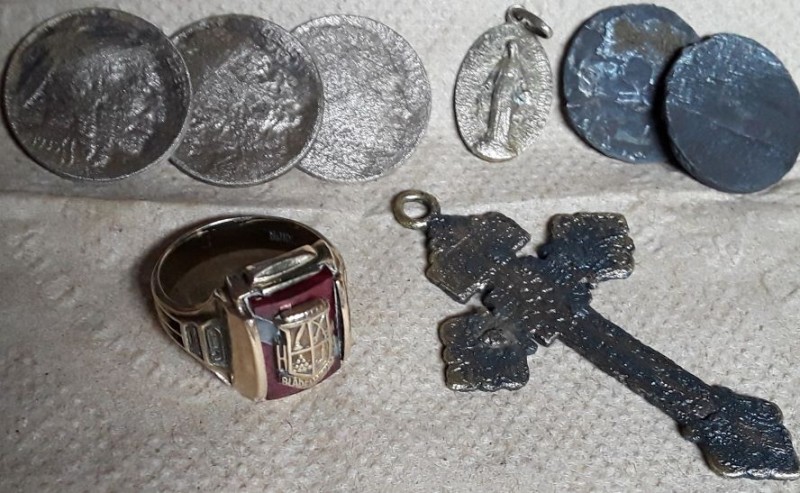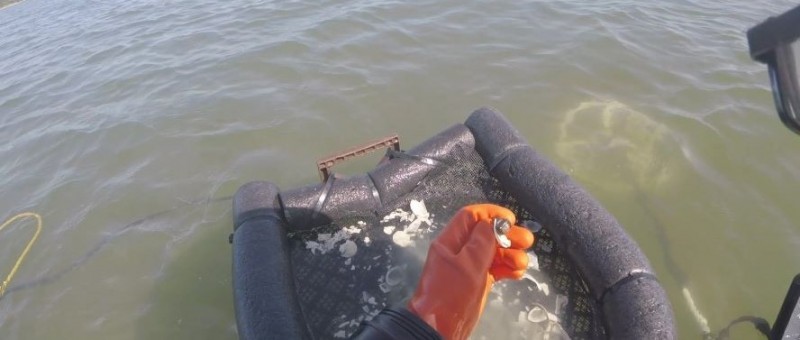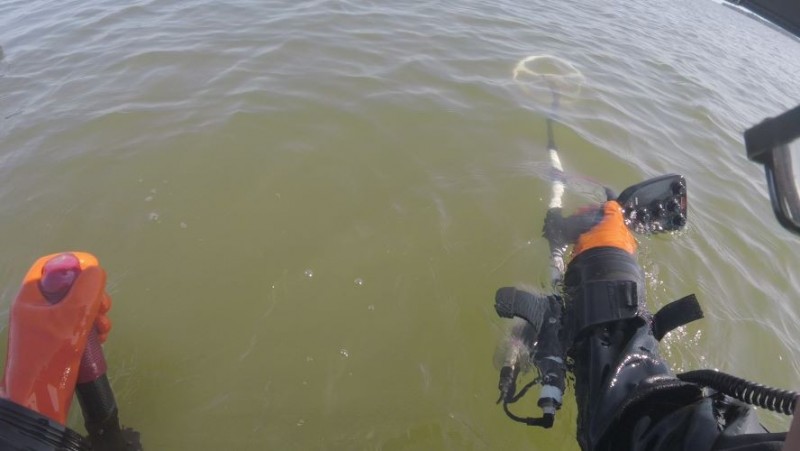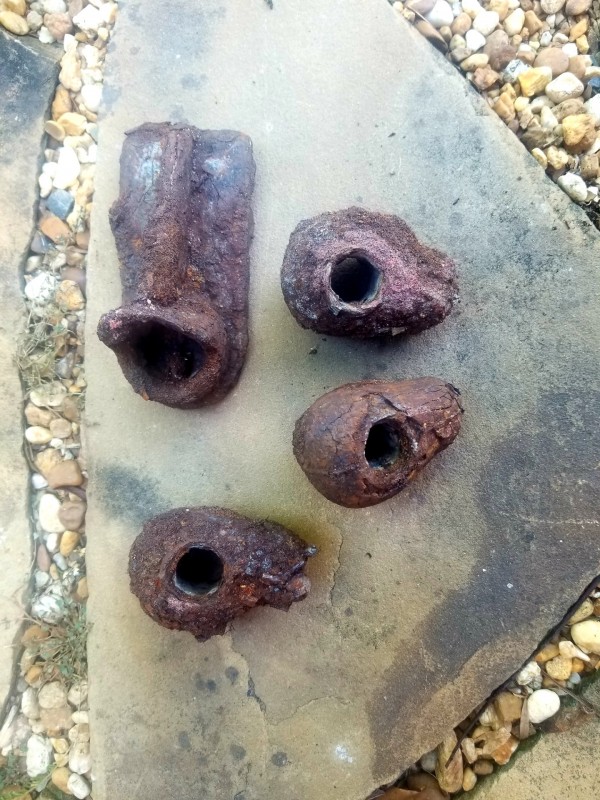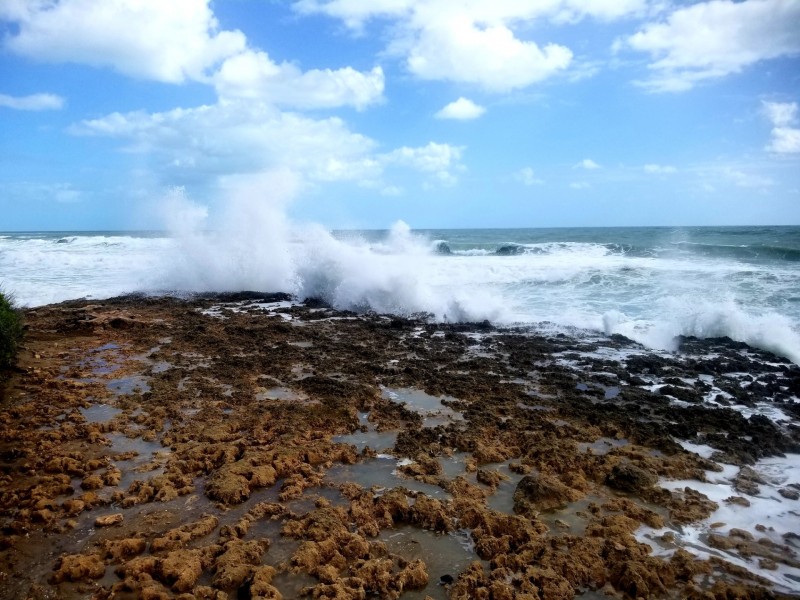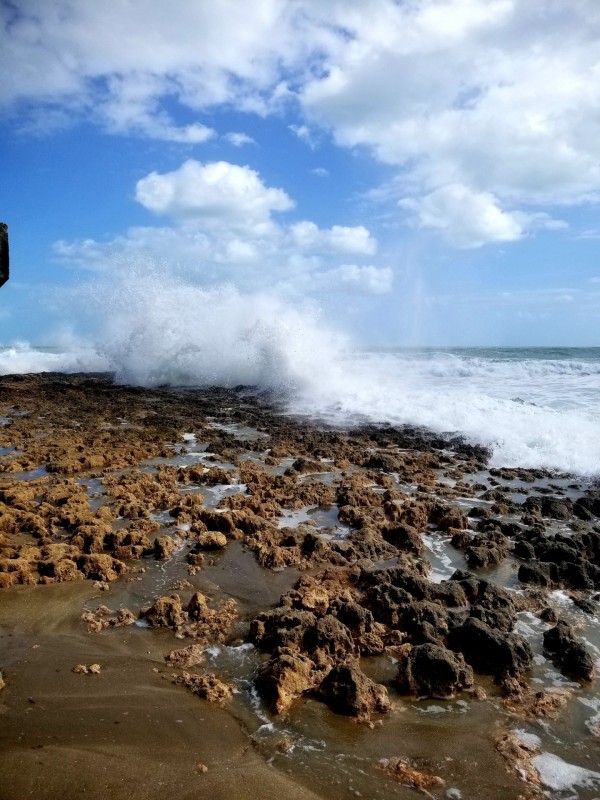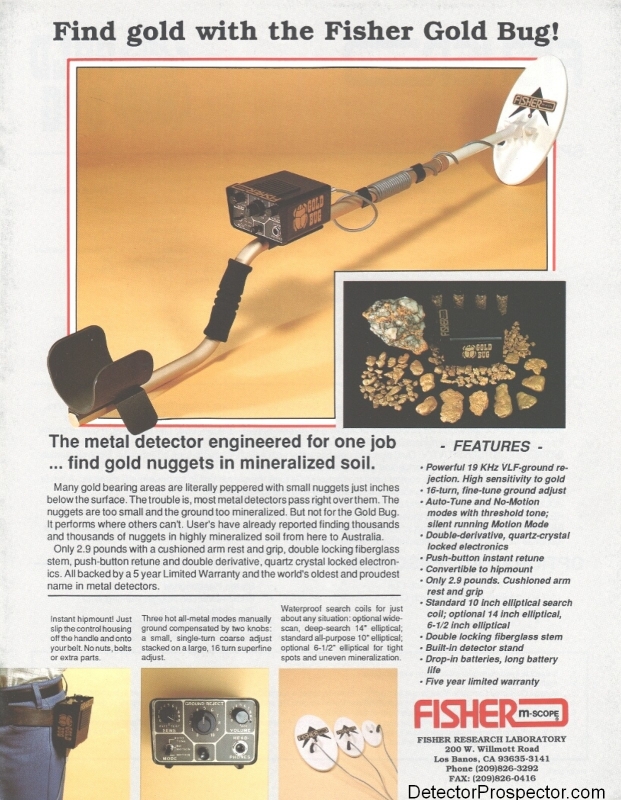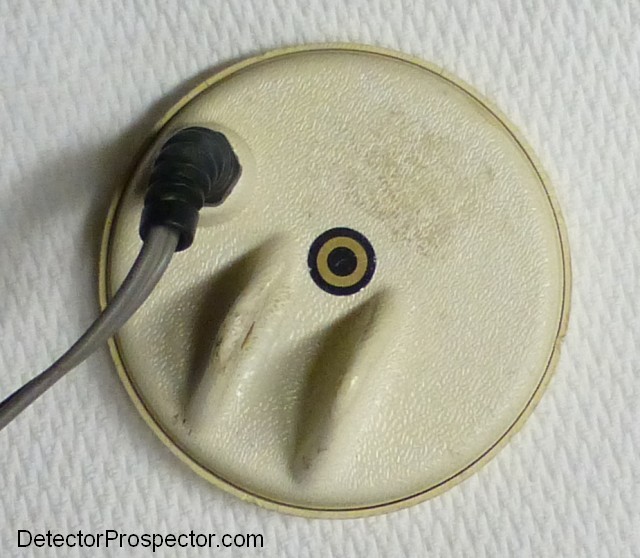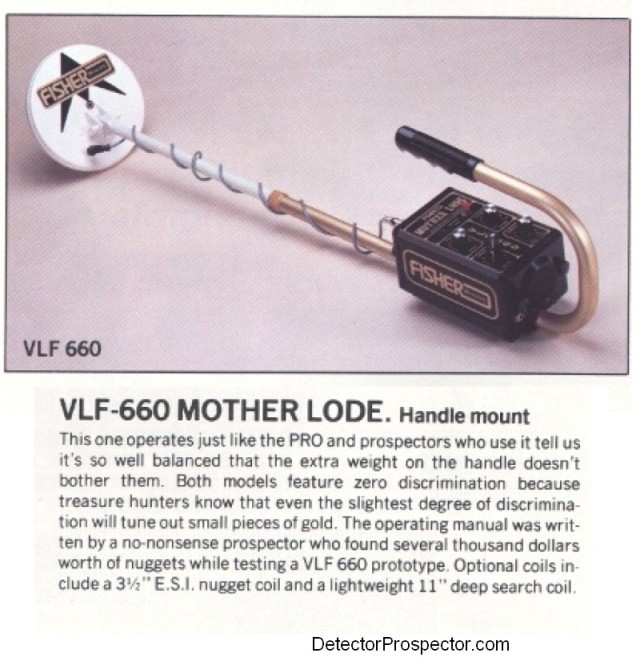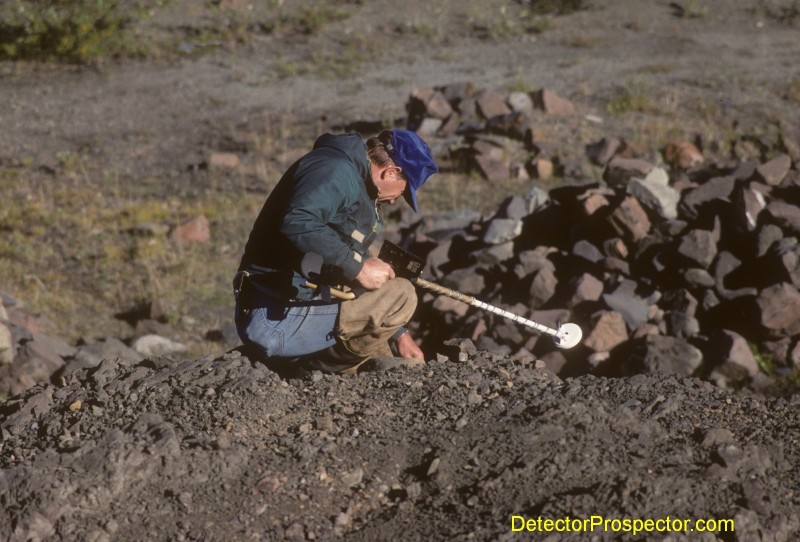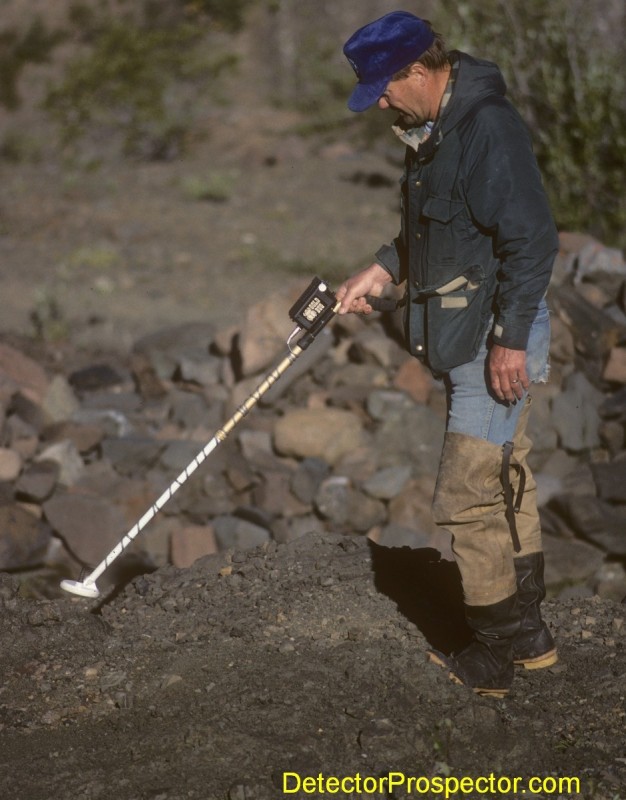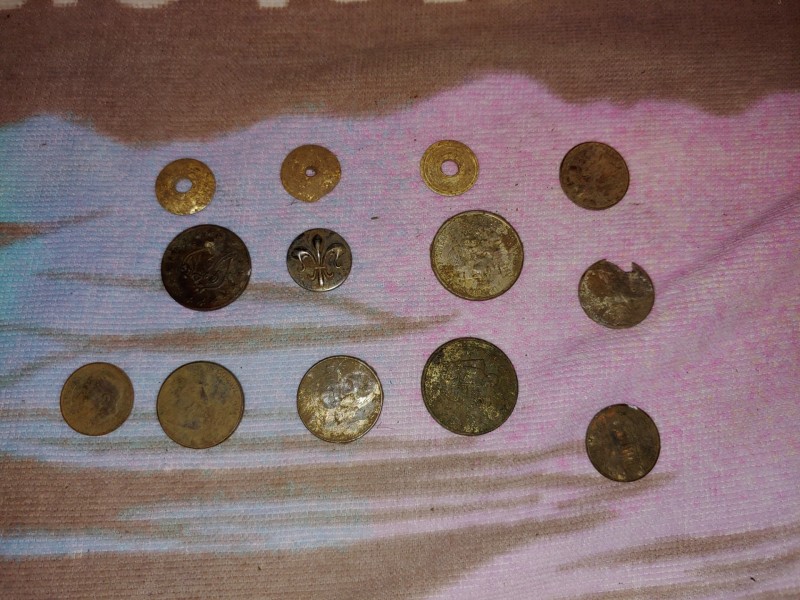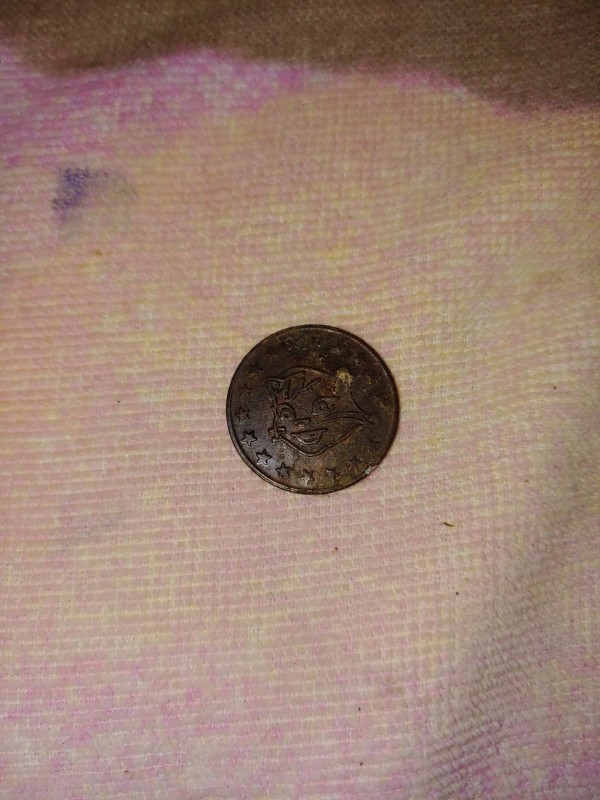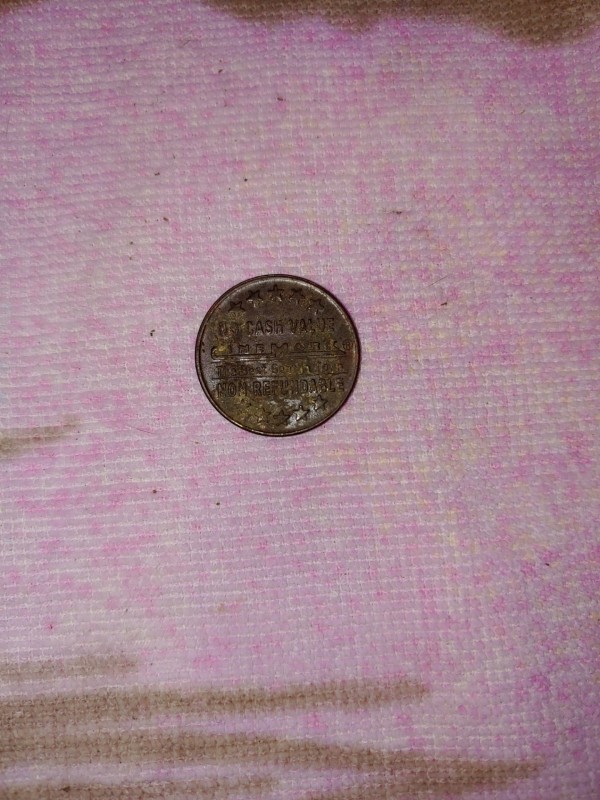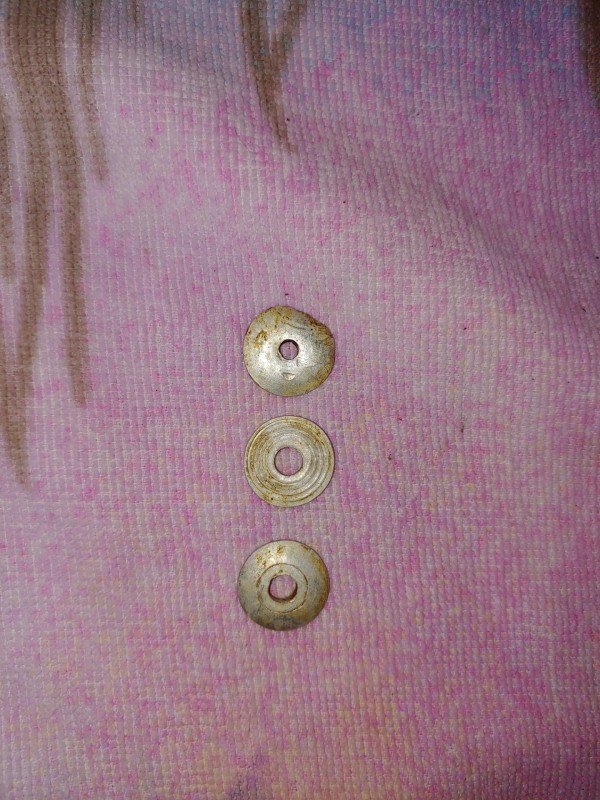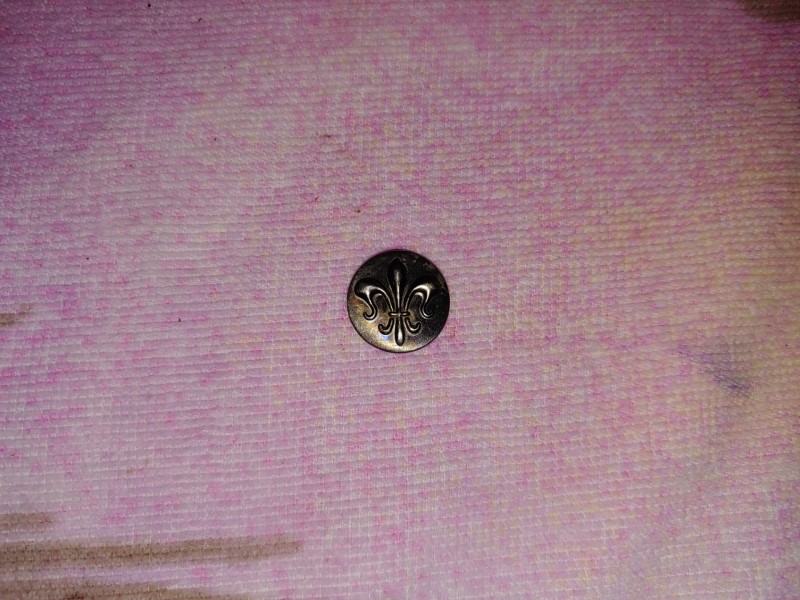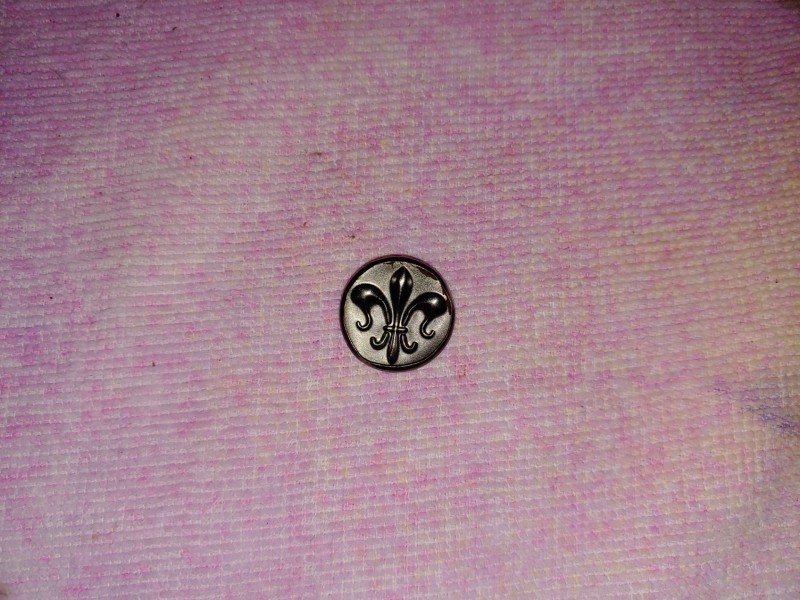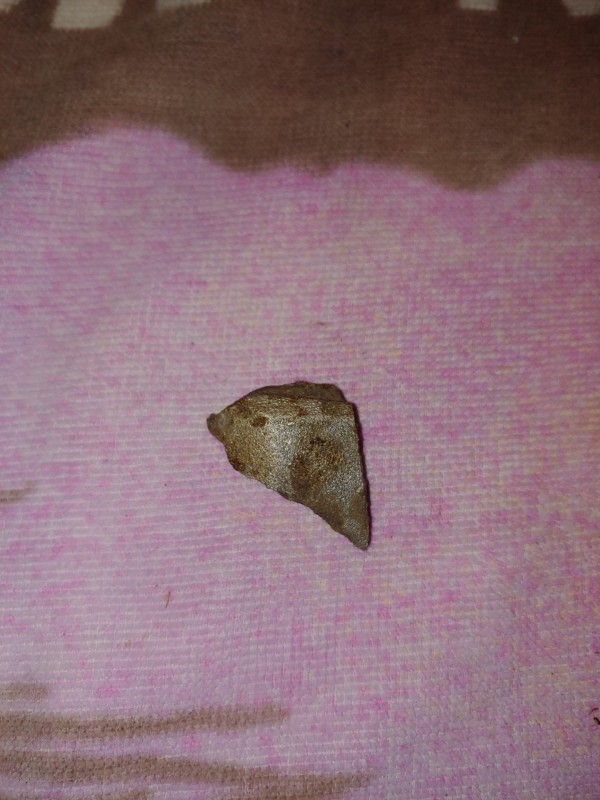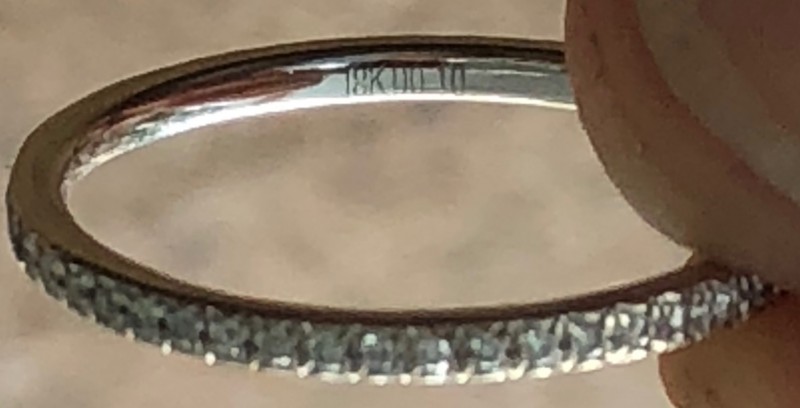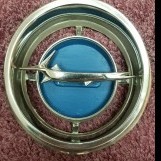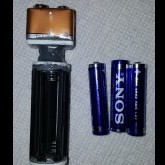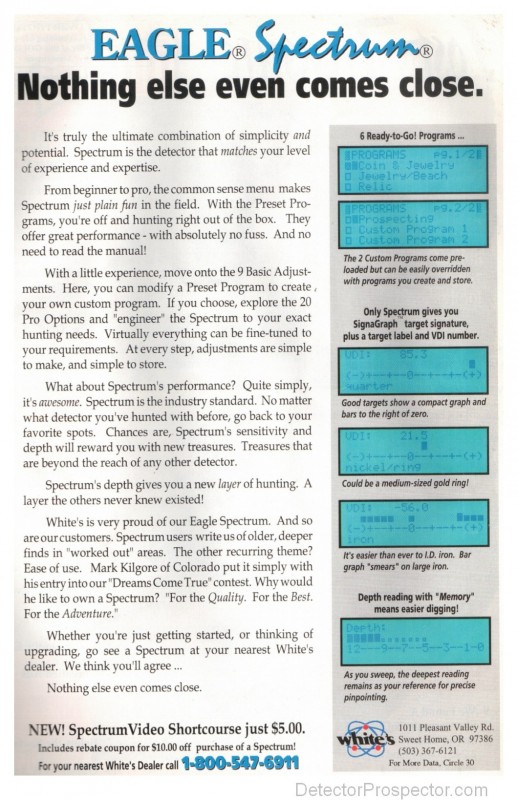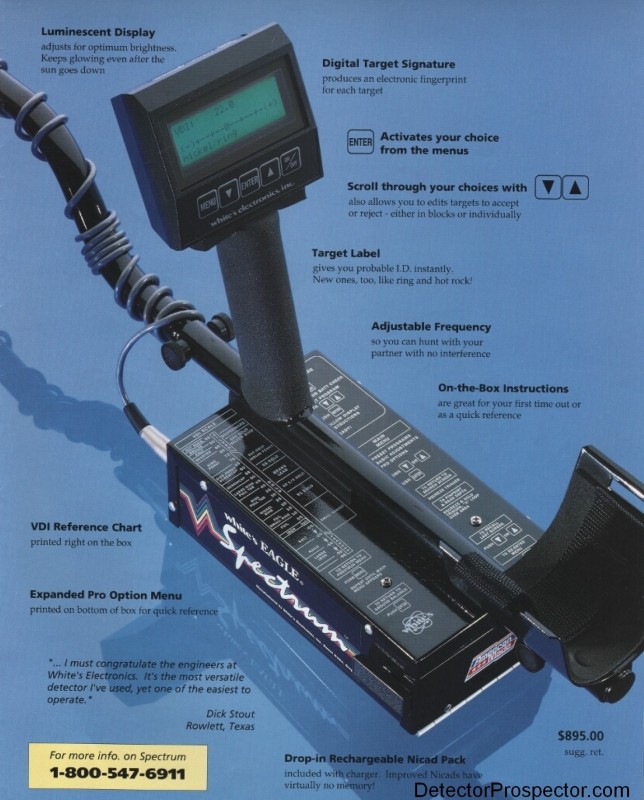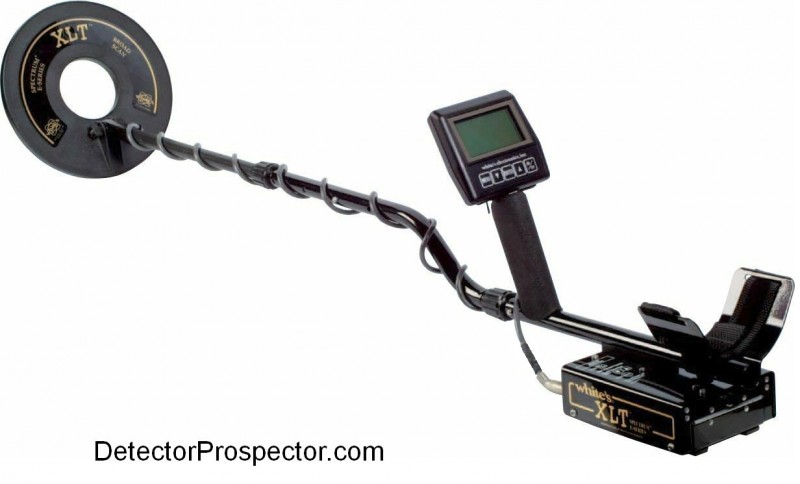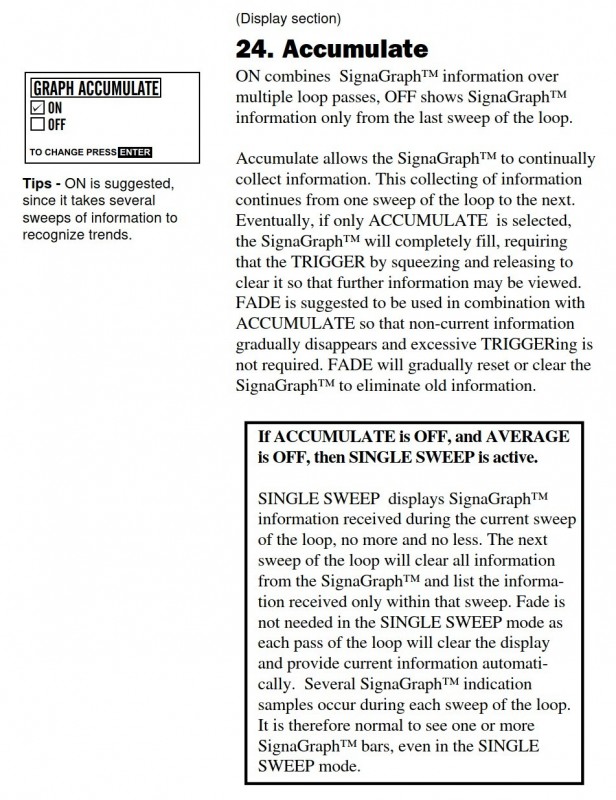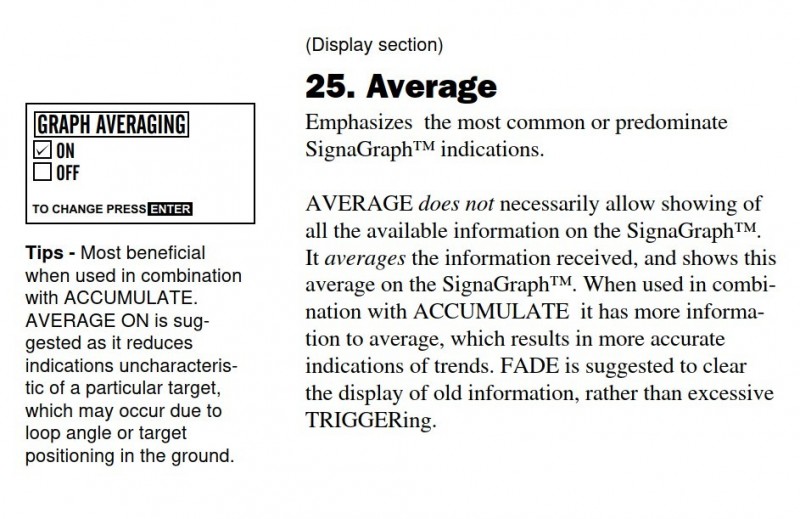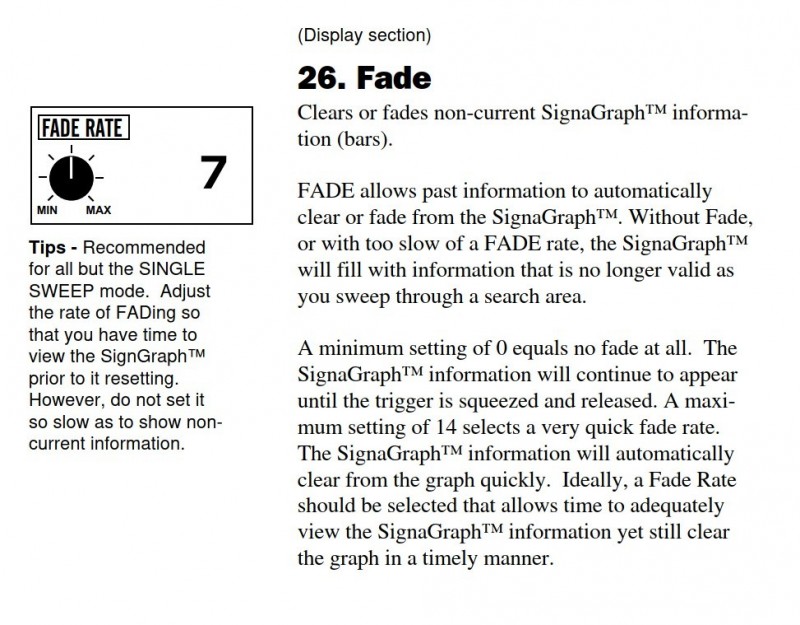Leaderboard
Popular Content
Showing content with the highest reputation on 09/24/2020 in all areas
-
Approximately 3 hour hunt (one battery), about 2 hours in the water in the Gulf. Water was almost flat with a slight current, bottom was rippled. This particular beach doesn't get many tourists and is somewhat out of the way, I didn't expect a lot of targets. Since I still have loads to learn on the machine, I didn't spend a whole lot of time with any specific setting as I was trying to see what adjustments did what. Hunted in all metal the entire hunt. I found you really need to hunt slow to avoid any rising threshold due to swinging into deeper water. Sensitivity adjustments and delay adjustments helped. The machine was more than useable in the water with the exception of the coil connector when it enters/exits the water. Odd thing on that was I thought I was shallow enough but the connector sticks out a good ways..... The tent stakes, sinker, and bottle caps were from the wet sand. The few other targets were from the water waist to chest deep. The dime seemed to be the deepest target at about 3 scoops deep give or take. There was no mistaking the ring as a target, it wasn't a whisper at all.....got it with the second scoop. Pinpointing the target prior to digging was easier with the 12" coil then I had thought it would be. Balance on this machine is really good for wet/dry hunting, however, it did take a few adjustments to my typical hunting style to have good coil control in the water, it does show you how "bad" your normal coil control may be.... You sure don't have to worry about when the battery is getting low, it lets you know when it is time to change batteries or go home! All in all, I'm liking this machine so far.... Cliff8 points
-
WInds and tides have been bad the last week along with other projects keeping me busy. So to mix the project side of it I took CDV's battery out for a test spin Weds. Not a lot of targets but scored the 10k Class ring early. As soon as I walked out I got a buffalo, small medallion then the gold ring. The AQ seems to dislike silver even in All metal mod...but loves nickels..both medallions are brass. Gold #22 for the AQ..depth on the 8.4 10k I could have sworn 2 feet but measured around 16 inch's..7 points
-
Hello all, We have been having some major surf from a hurricane spinning out in the Atlantic near Bermuda, as well as the time of year that we get King Tides! Depending on the wind direction, this can be a really productive time to beach hunt! Unfortunately the wind has been blowing directly on shore, which only makes for a wide flat beach, and few targets! I made the trek to Vero beach yesterday, as well as many other detectorists, to try and get an elusive piece of 1715 Wreck Treasure! There are a lot of locals who work these beaches, and have a tremendous advantage! For me, it's about an hour and a half drive North! So unfortunately, i don't get to do it often! The tide was already incoming when the park gate's opened, and with the short beach's, did not allow for much time to detect! Not that it mattered, there were few to no targets to be had! Sand was being pulled out by the strong high tides, but was being deposited as a secondary break for the waves, which was killing any more good erosion! The few guy's i talked to were just as aware of the poor condition of the beaches, but said it was good practice! Everyone just wants to get out and detect, after all this time indoors, from the heat, and pandemic! I did find some interesting iron targets on the intercoastal side of one beach, but i don't think they are super old! Picked them up anyway, so i wouldn't be skunked! But the weather was beautiful, and not as humid, for once in about 8 months! Great way to start Fall here! Hopefully a few "Winter" storms this season will give us Florida boy's and girl's, and any of you visiting, a chance for some "Reale" Treasure!! 🌊👍👍6 points
-
I have a 1990s era Fisher Gold Bug, the original 19 kHz analog version, long since replaced by newer models. The old 19 kHz model was not particularly hot, but it did have an ability to ground balance out some hot rocks that newer and hotter VLF machines struggle with. Original Fisher Gold Bug Data & Reviews The detector came with a 10" elliptical search coil. I have a couple very rare 3.5" round coils that Fisher made for these models before the little 4" x 6" elliptical replaced it. It's the smallest search coil I've ever owned for a commercially sold metal detector, making the unit into more of a probe than a normal detector. The threshold was cutting out if the detector was bumped, something loose, so it's been sitting idle for a very long time. I decided it was doing no good as is, and by chance had an opportunity to call Felix at Fisher recently. Felix is another old-timer in the industry like myself, who I have not talked to since I left my old dealership in Alaska over eight years ago. Anyway, since the detector is still actually functional Felix figured they could give it a good refurbish and fix whatever is loose. The main thing I wanted, however, was to get the detector tuned for the 3.5" coil. Most people do not know it, but analog Gold Bugs are hand tuned for every coil. The coil they ship with is tuned for the detector, or should I say the detector is tuned for the coil. Accessory coils may or may not be a perfect match if the original coil is swapped out for something else. Long story short is I am asking them to match the detector to the 3.5" coil as well as is possible. The original Gold Bug is a genuine classic. Prior to it, detectors were large square boxes with extremely poor ergonomics. The Bug features a very compact control box that is removeable from a S rod, enabling easy chest or hip mounting. The design seems normal now, but you have to have used what came before to see the genius of what Fisher did with the Gold Bug. 19 kHz was also a radically high frequency at the time, as people were just catching on to the idea that higher frequencies are better for small gold nuggets than the lower frequencies that were the norm of the time. The 19 kHz Gold Bug replaced the 4.5 kHz VLF-660 Mother Lode as Fishers top nugget detector. Frankly, Fisher was not seriously in the game prior to this point, with Garrett probably the leader in VLF gold detectors at the time. A new company named Minelab was just starting to sell detectors in Australia, and had yet to really make a name for themselves. Anyway, control box and coil boxed up and on the way to El Paso. I'll let you all know how long it takes and what the result is. Here is a picture of one of the coils. The Gold Bug coils first used a gray dual lead cable, which was replaced very early on with the stouter black cable used to this day. This is the older coil of the two, though it also has less wear. The one I sent in has the heavier cable but is in poor condition. I need to reinforce the coil ears when I get it back since one is cracking. But I decided I wanted to use the coil with the heavier cable, with this older one serving as backup until I sort this all out. And in case anyone is wondering, the old 19 kHz coils do not work on the newer digital versions of the 19 kHz Gold Bug. 3.5" round search coil for original analog Gold Bug To reiterate what a radical design advance the Gold Bug was at the time, here is a picture of the detector it replaced, the 4.5 kHz Mother Lode... Fisher VLF-660 Mother Lode metal detector And the new 19 kHz Gold Bug...5 points
-
The 19 kHz Gold Bug was kind of the SD2000 of the day. Prior to it, the best thing going was the 15 kHz Garrett Groundhog circuit. Magazines of the time had many stories of people in Australia cleaning up with these old Gold Bugs. That was, as you note, more a function of being first on the ground, not any magical powers the machine had. It is what I call a "low gain" 19 kHz, not as hot on tiny gold as the new 19 kHz digital models, which are running higher gain circuitry. As I noted, however, this allowed the machine to handle really bad ground relatively well for a VLF detector. The coil does look tiny. Here is my father using one back around 1990. The coil is described variously as a 3.5" coil or 3-3/4" coil, but it is 3.5" without scuff cover, closer to 3-3/4" with cover. As you can see it is also very thin, especially compared to other coils of the day or even today. Most similar size coils are over twice as thick. Yes, this is a concentric coil, as are all analog Gold Bug coils. The old coil I am having serviced was used without a scuff cover and is slightly worn through to the epoxy along one edge. The older coil has minimal use and still has the scuff cover on it. Another note on old Gold Bug models. The earliest are like in the photos below, with a white lower rod as part of the two piece shaft. The coil cables are gray or silver, and did not go to black until later. A three piece rod was offered as an option, and it was so popular it eventually became standard. FREE BOOK - Advanced Nugget Hunting with the Fisher Gold Bug Bud Herschbach with original 19 kHz Fisher Gold Bug Bud Herschbach with original 19 kHz Fisher Gold Bug4 points
-
Thanks for the excellent review Walt. I agree with your assessment especially after being at a group hunt this past weekend where one person had an APEX. They purchased it for the reasons Chase mentioned plus a few more. Being elderly, a woman, and very experienced they wanted: something that was lighter weight and more ergonomic than their AT Pro (this was a big reason) a Garrett detector that could use the Garrett wireless headphones they already owned (big reason) a detector with a really big display (this was also a big reason) a detector that worked well in saltwater situations (SMF multi salt) a detector with more tones and more reliable target ID (they like the tones, ID not sure yet even with SMF) a detector that worked as well as their AT Pro for coin and jewelry (again not sure yet due to quality of Garrett's SMF and target separation) a detector that was a Garrett Jeff4 points
-
I know there's already a bunch of stuff written on iron masking. But there might be some new readers that could benefit. Over on Monte's forum I started a discussion on iron masking didn't get a lot of response but Monte did write some very informative responses if you want to visit the topic on his site it's under the relic/old site hunting section. Here's the video. Would love any additional comments on the subject if anyone would like to interject. I'm no expert and certainly don't know everything about every metal detector out there so I'm open to any constructive criticism or comments.3 points
-
I just got word today that the new lightweight 15” coils are in production. I have a prototype for the T2 - it weighs 750 grams (26 oz.). MSRP is $149. If anyone wants one, I can get it shipped direct from FTP to you. It looks identical to the previous 15” coil - just made with different epoxy and much lighter.3 points
-
Joe It wouldn’t take me long to work around that little problem. Those sandals on my feet would be coils and that look alike radio is my detector. They be pointing at me laughing and not even notice what I have hanging around my neck . I’m not at my best without clothing. Chuck3 points
-
I got my first chance to take the Apex out for a test drive in a local park. I chose U.S. Coins mode because the area I was hunting is home to a Carnival with Rides and Game Booths every year. I must say, it ran fairly quiet until it hit a target. I will most likely use Zero in the future as the “Pre-set” modes may have more discrimination than I’m used to. Or I could “Accept” some of the blocked-out segments to create a “Custom” Program. Overall impressions: Simple, nice and light weight, well balanced, easy to adjust settings plus the Wireless Audio that you can hear your Pin Pointer through! However, I watched a You Tube video of a hunt at a Boy Scout Camp. The videographer mentioned that the Depth Gauge seemed to be “off”. I experienced the same issue. One target read 4” when it was right under the surface. This happened more than once. My 1.5 hours netted me some Clad coins, a Cinemark Token, a Fleur-de-lis snap or button cover and three strange washers. I only found one other piece of “junk” which appears to be cast Aluminum. Comparing it to the Minelab Equinox Series would be a bit unfair. While they share similarities like Simultaneous MF, GB, Noise Cancel (Frequency Shift) and Preset Programs including Beach Mode, that’s where it ends. The Nox has way more Features and Adjustments putting in a completely different league altogether! The APEX is simply an entry level Multi-Frequency Metal Detector for those starting out or an upgrade for the many Ace Enthusiasts. I’ve mostly worked with the White’s TRX which reads off the tip. It will take some time getting used to the 360 degrees of the Garrett and Nokta Pin Pointers. My only real concern other than the Depth issue is what problems, if any, may occur due to them being put together so quickly to fill the many preorders and back orders.2 points
-
Did a late run at the local park, was dark so I was just picking some obvious targets. One area had some very old trees that had been taken down leaving some deep roots and for some reason there is a good amount of iron where the old oaks were so I tossed the Gold Racer into disc 2, kicked the sensitivity to 85 and upped the id to 25 trimming much of the chatter out. Knew I had a dime but didn't realize it was a silver until I got home and dumped my pouch out. Few months ago I did pick out an 1906 IH that was in fair shape.2 points
-
The AQ is not a silver magnet. To the best of my recollection, a nickel air tested better than a silver dollar on the AQ I sold OBN.2 points
-
2 points
-
Since they are in the coil making mood,....... I hope we see the 8 inch AQ coil before christmas..2 points
-
Yes mineral meter. Old oaks left areas that the meter hits 1/3-1/2 way up the meter and beyond the roots it drops to just a bar or less. I hit a school yard up the street that had a farm at one time. In that field there was a path with row of trees on either side. I tried to find the trees but looks like the whole area was backfilled by 3+ft of top soil on one end and foot near the parking lot. Came across some deep can targets I didn't dig but if there was anything old it was beyond the reach of my GR's coil. Did fine a couple bucks in pocket change I had missed with my other machines though.2 points
-
I always like the challenge of hunting iron infested areas. That is a good video and though I like all coil sizes to be similar it does show more of how the coils make a difference more so than the machines themselves, good overall look of what different people will run into with different machines. ID machines I look for an up tic on anything above the iron range but skip stuff that spikes the machine to the max range. Iron can bring a silver quarter's number down to a penny or even a pull tab but wouldn't put those numbers in near max or max on the scale. As you get smaller and lower conductors or 3d masking the target will get smothered over and may only produce an iron only signal but may be a small target relative to the id #. IE if you hear a small dime size target but it has the iron number of an ox shoe you may want to investigate. This is where I find a beep and dig to have an advantage not by technology but lack of. If I'm careful not to trim out the the fringe range than I am more likely to dig that target. Also I find a beep and dig to be more relaxing to hunt as I am not always trying to think so much hearing beeps, cross swinging over then and watching id's. ID machines I like to run with Iron audio on in a disc mode setting so I can hear what is under my feet and know if I should be paying more attention to iffy targets OR I run in all metal mode and listen to the variations in the ground. Old Iron here in the NE can have some big halos and the old square nails can obliterate many coin size targets.2 points
-
X.... may not be the best in 3D..Test according to me this Gold gain 30khz will do better ... Now for the test .... Andrew you did another excellent comparison test of several detectors in your field ... The truth is that not every detector also has a 3D separation predisposition and some detectors will do it better and others do not have such good assumptions. 2 D tests ... also show well the possibilities of separating a good surface signal in iron..and here is also important the ability of the detector to separate in this type of terrain .... in this type of separation, a smaller coil strongly helps .... so the detector can be replaced by a coil for a smaller one even "Improve" .. Finally, if the detector handles well both 2D and 3D separation test at the same time on a single optimal coil ... we can consider it as one of the top detectors for separation ..2 points
-
Interesting topic. I just received my Vista X yesterday, with 11 and 6 x 8 coil. I replicated the test above with the 4 inch dime, and 2 -3" nails each 4" from the dime on the surface. I put on the 6 x 8 coil, and I set the first disc level at 20. It low tones on the iron nails perfectly, but I could not get a squeek out of the dime. Moving the nails away, it hammers the dime. Now if I turn the coil 90 degrees, It detects the dime almost every sweep with the nails in place. Next I removed the nails, and laid a staple on a piece of plastic directly over the dime, and the detector nails the dime every time. Hardly affected by the staple at all. I did not get a chance to try the 11 coil tonite. I plan on doing a beach hunt tomorrow with the x. A fair amount of iron is there, we will see how it does. I sure do like the analog on the X.2 points
-
2 points
-
Wow!! A find like that on a first outing would make it very hard not to like the detector!2 points
-
RR, We have that problem at Cape Canaveral, being a National Seashore! With the added problem of being a high security zone! I guess that's why they allow the North End to be a nudist beach! Security know's that those individuals aren't concealing any weapons!!🤗👍👍2 points
-
Joe D Thanks for all the pictures. Like Mel Fisher he started the day always with a positive note . I too do the same bye saying this day is the day. Texas has a treasure coast and all know the location of the ships. The only little problem we have on getting to it is it’s a National Sea Shore now. If they catch you detecting there they don’t put you in jail they put you under the jail. I told my wife about the time I need to be put in a Rest home drag me off down there with a metal detector in hand. This way I’ll have a place to stay and she won’t have to pay for it. Chuck2 points
-
Fun and interesting video, but, it would have been better with a REAL head to head comparison and not just random individual finds. Why not compare each signal with each detector BEFORE they're dug to see what audio and I.D. signals look and sound like. He didn't really remark on how chatty the field was with the Vanquish or his buddy's Simplex, just the Apex. How would the Apex have been with the sensitivity turned down a bit to make it stable? What were the settings on the Vanquish and Simplex? Just from what little I could glean out of this rather limited test, I would choose the Vanquish.....or maybe the Simplex, but, the finds could have been random luck or operator experience/expertise.2 points
-
Great video, illustrates lots of basic concepts. I pay attention to coil size more than anything. A small coil on a slow machine will pick targets out of trash that a fast machine with a larger coil will miss. The Deus is famous for separation, but many slower detectors can cheat it by running much smaller coils than are available on the Deus. The bottom line is a coil sees everything that is under it at the same time. The detector can either pick one signal as being the strongest and lock on it, or it can average/accumulate things together into a single reading. Dankowski Classics: Beneath The Mask The Painful Truth2 points
-
1 point
-
1 point
-
I gave v3 another try today. The Nox was stable, but unfortunately first impressions are not great - this is probably the first time I come back empty handed, and that place always gave something. I even tried digging all iffy signals. The contrast with 1.7.5 is that Nox was unusually quiet over mineralization, very little negative grunt, and I know it is there. Bit better with EMI. I think it falses more around iron. And it made me to dig 2 cast iron pieces, that were giving solid 20-21, this I did not like at all. It used to be 13. On those grounds 20-21 would usually be a coin under the coil. Something to think about.1 point
-
1 point
-
A number of great “pro tip” detecting nuggets in this post.1 point
-
The AQ hit the Jackpot on the first time out. Congratulations on a great find Cliff. HH Mike1 point
-
Steve,i really do like reading these topics that you post,the images that you also add really complete the story so we can fully understand how these early classic detector and equipment was used.It all makes so much more sense when you can see the images as well. Bravo,another classic article.1 point
-
Simon - The context I answered your question was from the perspective of the typical Ace user. Not you nor me. This person typically does not have unlimited means to own mini - monsters or detectors north of $5K US or to get a Vanquish for primarily coinshooting a favorite football pitch site or in my case to get a Tarsacci simply to see what it can do, not because I need one. They are looking for value, 2 x $400 is a lot of money to them. The are looking for a performance/feature bump and ease of use and have jobs that limit their detecting time in the field, so don't have the luxury of learning the ins and outs of a top end detector even if they could afford one. Simply looking to take their detecting to the next level but not necessarily to the pinnacle of detecting, so it IS likely they will only stick with Apex. It will meet their needs even if it wouldn't meet ours. They are not detector nerds and they are probably brand loyal to a fault. They may see no need to go beyond the AT Max. They are not you and me, but they are likely the majority of detectorists out there. You understand and focus on the detector not the typical detectorist and that is why you have trouble understanding why they WOULDN'T pay double the Apex price for a better detector. We are the outliers. Chase1 point
-
Congrats on your first time out and the gold bonus! Good to hear you're liking the machine. That's quite a ring!!1 point
-
1 point
-
Yep....1998-1999.......building a house, getting married, first child on the way. The “Cuda” was definitely circling but if I had cast out some bait and snagged one then my wife to be would have taken an even bigger chunk out of my azzz 😂1 point
-
1 point
-
Not in melt value BUT, here it is with its retail value..... I'm shocked at the price to be honest. https://www.macys.com/shop/product/mens-diamond-cluster-ring-2-ct.-t.w.-in-10k-gold?ID=6209252&CategoryID=21176 To bad all hunts don't have results like that! Cliff1 point
-
Kac The tree I was talking about was none of the three you said. I do remember running the coil over the side of the tree it had hot spots that would set the detector off . The farm land was a sandy with clay mixed in. I’m thinking it may have been a Elm . Here I go with another story. A friend told me about a big Oak tree he got a strong signal about two feet off the ground. I was all for checking it out. Sure enough I too got a strong signal. You could see a holler about 8 feet off the ground where anyone could have dropped something in . I could see already that bank robber on his horse sitting in the saddle dropping in his loot for a later day . I had totally lost control because before I knew it I had cut a window in the side of that tree. Well I know you wanting to know what was in that tree. Somebody had been using that hole as a basketball hoop and it was full of soda cans . It was a big letdown and a kick in the rear at the same time. Chuck1 point
-
I was wondering why around the old oaks that were cut down why the mineralization was so high. Is it because the trees absorb the minerals in the area? If so then that could be a good indicator of where old trees once existed especially in open fields and parks and would be good spots to double check for targets especially deep targets. So keep an eye on the mineralization meter on your detectors.1 point
-
Says the advanced metal detector user who purchased a Vanquish! Granted, you got a 540... But seriously, going from an old Ace to the Apex is a prett big jump, is it not? Even if Garrett's SMF tech works only have as well as Minelab's, it's still a nice upgrade. I guess for someone who wants to really push their metal detecting limits, in terms of areas to hunt and skills to develop, it may not be a big jump. But someone who wants to keep things casual and doesn't expect to go underwater, it's a nice upgrade.1 point
-
Yep, this is a fairly common problem. In some detectors such as the XP Deus, adding some discrimination, while still allowing the iron to be heard via iron volume helps to mitigate this phenomenon versus running with zero disc.1 point
-
A few updates made to the original post. I indicated that the SignaGraph display was originally developed for the White's XLT. Not quite. White's was a genuine innovator in digital metal detecting, with the first true digital model, the White's Eagle. As shared in Mark's notes, the original Eagle models had a very basic display. The SignaGraph first appeared in the last version of the Eagle, the Eagle Spectrum, the first White's detector to bear the Spectrum moniker. The SignaGraph was thought of as a "Phase Spectrum Analyzer", and that is where the "Spectrum" part of the name derives from. The Eagle Spectrum had the old larger control box powered by four C cells. The Eagle Spectrum was very short lived however, as this is when White's was making the move to smaller control boxes powered by eight AA batteries. This set the stage for most everything else that followed, and the White's XLT was one of the first beneficiaries of the new design. The slimmed down Eagle Spectrum powered by eight AA batteries and with a better LCD display was renamed the Spectrum XLT, and then simply XLT. Here is the ad for the new Eagle Spectrum touting the new SignaGraph display. Click for a larger version. And here is the Eagle Spectrum owner's manual, where one can see the basics of what later became the XLT, then DFX, and the V series.1 point
-
I love these kind of tech notes, and often information detailed in earlier models is sometimes left out in later models as not "new" anymore. I'm pushing it as far as copyright goes reposting some of this stuff I have archived over the years, and which seems to have disappeared as time goes on. This was all on the White's website or in their informational pamphlets once upon a time, but is all long gone now. Anyway, I'm going with the "reposting for historical and informational purposes only" excuse because I hate to see this stuff get lost over time. I just added the notes on Accumulate, Average, and Fade on a separate thread.1 point
-
The Accumulate, Average, and Fade controls exist on several White's models, having first been introduced on the White's Eagle Spectrum. The functions govern how the SignaGraph™ and SpectraGraph™ displays show targets and so are unique to White's detectors. These display controls are also used on the DFX and V models. This note appended to the Engineers Guide to the Spectrum XLT offers a basic explanation of what these controls are doing. The display controls are also covered on pages 45-46 of the XLT Users Guide (excerpted below). Spectrum XLT Engineering Note Using Spectrum XLT Modes: Accumulate, Average, and Fade by Mark Rowan Although the SignaGraph™ display format has been well received, there seems to be some confusion regarding the option (average accumulate, and fade) and how to use them. Perhaps a more detailed explanation is called for. The default (preset) condition is Accumulate/Average/Fade, the fade rate being fairly slow. With each sweep over the target, several attempts are made to assign it a V.D.I. number. Each reading (There may be only one or two, or as many as six or eight readings per sweep) is reported to the user as a vertical bar on the SignaGraph™. (NOTE: If all eight readings are the same, the user will only see one bar). In Accumulate mode, these bars are not "cleared out or "blanked" on subsequent sweeps, but continue to "build up" in the display so that the user sees the entire history of multiple passes over the target. Squeezing the trigger will clear the display if it gets too cluttered, or if the user chooses to move to a different target with those of the second one. However, continually having to squeeze the trigger can be a nuisance -- this is where Fade comes in. If a certain period of time elapses with no new target responses, the vertical bars will be shortened by one increment. Eventually, they will disappear from the display. Notice, however, that if a new response comes along quickly enough, the Fade timer is reset (this is necessary to prevent readings from beginning to fade before the user has even had time to see them). Thus, if the Fade rate is slow and the user is sweeping the loop fairly quickly, no fading will occur until he stops swinging the loop or moves away from the target If he is working a trashy area or has his sensitivity cranked up to the noise threshold, the Fade out may be disabled entirely. This is the justification for the Fade Rate control. If the fade rate is increased, the user can find a level at which Fading will reliably occur, but which is not too fast for his personal taste or his style of hunting. If the Accumulate control is turned off the instrument is in the "single sweep" mode. Each sweep of the loop causes the display to be cleared, and only those readings made during the current pass over the target to be shown. The primary advantage of this is that it reduces the chance for readings from two different targets to be confused with each other. If the Fade rate is set to 0, fading is disabled and display bars will remain indefinitely. Average mode is entirely different than either the Accumulate or "single-sweep" mode of operation. When Averaging is turned off (the default in all preset programs have Averaging on) the vertical height of the display bar is an indication of the strength of the signal when that reading was taken. With Averaging, however, the height of the bar represents a running total of the number of readings that have occurred at that point on the display. For example, if you pass the loop several times over a gold ring and get readings of 1, 10, 40, 10, 10, -20, and 10, the display will show a tall bar at the place corresponding to 10 on the display, and very short bars at the positions corresponding to -10, 0, and 40. If the count exceeds the vertical resolution of the display, the bar remains at its maximum height and all other bars in the display are reduced by one increment, eventually disappearing from the display. The usefulness of this is that if the error in the V.D.I. readings is random (such as that caused by electromagnetic interference or irregular loop motion), it will eventually average out and the display will "lock on", showing a single prominent segment at the correct point on the display. Unfortunately, there is a catch. Iron and foil targets which mimic coins will also appear to "lock on"; the smearing one would normally expect will be suppressed somewhat. However, in the hands of a skilled user this should be a very useful feature. Mark Rowan was a Senior Engineer for White's Electronics, Inc. Mark holds degrees in General Science, and Electronics Engineering Technology, and is a graduate of the University of Oregon. His background includes satellite communications and RF test and measurement instrumentation.1 point
-
Hitting a NEW PERMISSION, fields surrounding a Manor House with the Nokta Makro Simplex, Minelab Vanquish and Garrett Apex1 point
-
Hurry, Hurry--Only 9 of these left on Amazon! I got one and it sure is the real deal. I wasn't using my F-19 much and sold it a year ago, but I still had 3 aftermarket coils--13" Ultimate, Nel Snake & Sharpshooter. so I had to jump on this deal. I decided to set it up differently setting the tone break at 39 and volume at 13. Seems like it's faster than the older F19 and in the iron-littered mining camp I go to nearby I found a couple old Levi rivets, an old encrusted wheat penny--looks like 1934 plus other small copper, & brass bits. But round, very rusted can tops and bottoms sometimes don't give a low tone when pulling the coil away. Used the Snake coil. Have had many different detectors between these sagebrushes and I know lotsa people been here, being a genuine NV ghost town.1 point
-
What the issue is the brand you buy and use. SS or the plated composite material. The cheaper is 7 dollars, the SS is about 23 dollars..USD. The cheaper will last several years but it requires you keep cleaned and lubed both it and it's mate. The SS you can abuse it a little more but from time to time will need taken loose and lubed, other then that ...they seem to hold up until a internal wire breaks...One of the most important thing is to fill that internal area that the wires connect to the pins with Epoxy when installing... either. Salt is the issue, not really the wear. And that being said the Souriau brand that is used on the AQ will wear in time. A composite material..will, the screw together type are less prone to wear.1 point
-
Earlier in the week I asked a question about using the 15" coil after updating to 3.0. I went out just a couple of hours after that on a early morning hunt and surprised myself with the stability. Normally I would put my finds under looking for jewelry but this was more about the coil and software than working the beach in my estimation. I think the Equinox is more stable in multi with the 11" coil after the update. Now I think it has done wonders for my 15" coil stability. The beaches haven't had a big wave event this week so I couldn't find patches at my beaches like I can sometimes. The large coil test would give me more coverage. This first picture was of the best items I found. In addition I found a couple of metal toy cars. The first target I found was the twisted earring. It comes in at a negative number. A bit later I found the stainless steel piece whatever it is. And then I went in to the calf to knee waves and got a signal and I blindly scooped and then I could see the glimmer of a ring. It surprised me but I knew it was a fake. Later as I was getting ready to leave a guy came up to me and wanted me to help him find his keys. A set of 4 keys should not be too hard to find but he didn't have a good idea where he lost them. We searched in the dry sand (now I was in Park 1) for over 30 minutes. During that time I found the cars and the chain. It is not magnetic but it was a scratchy near 0 read on the Nox, more towards negative. That was a real surprise. The next hunt produced a couple of rings and some 'smalls' for the 15". Once again the beaches needed to be worked slowly and the big coil found the stone ring when it read 18. The little thin ring is the first ring I have found that said 1! (Every other target that is a 1 has been foil.) The little charm and the chain dangle were tiny targets, the micro jewelry kind. I was impressed for the 15". The wire hoop was a 10 and I was hoping it was good but alas just junk and then the 1971 Kennedy. I haven't found many of them and that was the year I graduated high school. This afternoon I went out in the hot sun and couldn't stay long on the beach because of so many people. I worked my way into the dry sand that I have worked before with my CTX. I can't work it with the Equinox because there is an EMI there I just have to avoid. Today I was in Park 1 when I walked into that zone and didn't have to change anything. As a matter of fact I could cycle through the frequencies and there was no EMI problem anywhere. It got a little ratty later because there is a road with underground cables nearby but I could even hear the targets over that noise. Mostly pennies were left and they were not even wheats. One target had me digging deep. The sun was hot and I wanted to stop and I wanted to see it also. I persisted and at over 20" I scooped out of the bottom of the hole a folded piece of aluminum packaging. It wasn't an aluminum can (I think I would have given up on it) but it is one of the deepest targets I've ever dug with the Equinox. I was very glad it was not in wet sand. I like the 15" coil much better now. It gets caught in the waves but it stays stable. Now I need to use the 6" with the new version looking for nuggets. Mitchel1 point
-
A nice find,the 6'' coil it stays on my detector 95% of the time,its extremely light and because its so small as we are approaching harvest time soon in the UK you need a small coil to get in between the stubble rows and this is when this small coil really earns its keep. For its size its also pretty deep as well,also use it in AM mode but for me i prefer Field1 it just suits my sites better. Well done1 point
-
Updated original post to add production notes, summary, and improved graphic illustrating gold production. Links added to cited references. Just a comment. I find these reports that talk about gold produced up to 1970 to be somewhat more realistic for my purposes than reports incorporating later production data. Most new reports include production from modern mining that goes after the type of gold I can't find with a gold pan and metal detector. These old reports focus more on the older, richer deposits that are of more interest to the individual prospector. They also tend to be written more for the layman - the new reports like to show off the college educations of the writers. That said, these older reports all cut off between 1960 and 1970 and do not include the latest data.1 point


.thumb.jpg.d71314a45f3dc82bf75ac1b96e7e9201.jpg)


